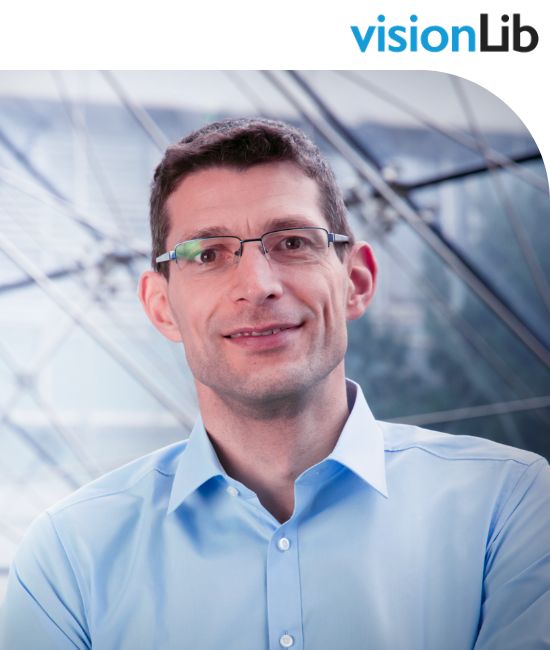09:00 AM - 09:25 AM
Description
In this session, Dijam Panigrahi and Baskar Banerjee, co-founders of GridRaster, will explore the impact of precision 3D AI on industrial Augmented Reality (AR) applications. The discussion will center around the value AR solutions, characterized by high precision 3D
scanning, object tracking and millimeter alignment, can bring to customers in aerospace, defense, and the wider industrial sphere.
A major part of the dialogue will revolve around the integration of 3D Artificial Intelligence (AI) in AR solutions. Panigrahi and Banerjee will highlight their practical applications in fields like automation, robotics, and digital twin scenarios. Mr. Panigrahi and Dr. Banerjee will also walk attendees through the unique advantages of cloud-based architecture, emphasizing its scalability, security, and ability to ensure a seamless digital thread, thereby streamlining the deployment and operation of immersive enterprise applications.
The primary goal of the session is to broaden the attendees' understanding of AI-backed AR technologies and their current and potential impacts on the aerospace, defense, and other industrial sectors. It's an invitation for participants to become a part of the ongoing conversation about the practical uses and future possibilities of these innovative technologies.
Speakers


09:30 AM - 10:25 AM
Description
Coming Soon!
Speakers




10:30 AM - 10:55 AM
Description
Back in 2020, Automata’s business changed overnight. For this robotics company, medical laboratories and testing facilities were calling non-stop looking to automate COVID-19 tests.
In this talk, Maxim Cooper, Team Lead and Pre Sales Application Engineer at Automata, will share how they navigated this tumultuous period and turned to augmented reality technology as a solution. He’ll discuss how they were able to make their team more efficient and effective, and share his plans for extending this to a showroom of the future.
Maxim will be joined by Zac Duff, Co-Founder and CEO of JigSpace, who will share a behind the scenes look at how this was possible, and the actions other companies can take to drastically reduce their sales cycle from 6 months to 6 weeks.
You’ll come away with practical examples of how companies can unlock real value by harnessing augmented reality to transform how they sell and support their customers, and be inspired by a company’s story of transformation.
Speakers


11:05 AM - 12:00 PM
Description
Join us for a thought-provoking discussion on the importance of building experiences to support, engage and enable the inclusion of all people. This diverse panel of expert stakeholders will delve into the challenges and opportunities of creating inclusive and accessible XR technology for all focusing on enterprise environments. With insights and best practices, this panel will share solutions, use cases and advances where XR has enabled and served communities, and will provide a glimpse into the future of accessibility.
Speakers





12:05 PM - 12:30 PM
Description
Industrial AR has a large history, pilling up few “top” but also lots of “flop” cases, to everyone's frustration. While for a long time the industry focused on AR-assisted maintenance or of procedure-like guidance use cases, it turned out, that companies are not struggling to incorporate XR-enabling technologies, but instead struggle rolling-out pilots as solutions. There is no doubt about the solution’s benefit, but because of manual efforts and challenges in data preparation and information authoring, the ROI is far too often not there.
AR-based quality inspection has turned to be different. Data needed for the use case is close, if not similar, to already existing 3D/CAD data from engineering, eliminating the need for further preparation other than tracking of objects in order to augment this data onto its corresponding object. AR, specifically, is _the_ enabler technology to find deviation quicker and more immediately. No other principle enables such immediate way to compare a manufactured item to its CAD specification. As such, it is the perfect match of technology, effort and output.
Turning tablets into inspection tools with AR, mobile devices are leaner compared to existing 3D scanning and metrology boxes (which produce similar results but need far more time for preparation and conduction) and more flexible, as small or even very large parts can be verified for quality in real time and directly on location, wherever parts are produced or stored.
In our talk we present use cases from automotive as well as mechanical engineering and welding industries, including agricultural manufacturer Krone and Slavia Production Systems (a “hidden champion“ from Eastern Europe, who’s a major automotive supplier), who were able to quickly integrate AR into their production and have since been successfully using it in everyday operations.
We illustrate how, with AR, SMEs and corporates can use their CAD data together with mobile devices to transform their current quality assurance and production processes. With a few steps, they gain from increased inspection throughput as well as a digitalized inspection plans, while reducing costs and time for quality assurance. What's more, ensuring high quality standards, companies will automatically become cleaner, save on material transportation and money by avoiding scrap and rework. What else but a "killer case" could AR be with that kind of ROI?
Speakers

01:35 PM - 02:30 PM
Description
Coming Soon!
Speakers




02:35 PM - 03:00 PM
Description
The Metaverse has been a topic of much discussion recently. While its actual definition and evolution will continue to be hotly debated, the one thing that all invested parties can agree on is the need to have a “critical mass” of people in social worlds, so that the network effects can generate value for individuals and enterprises.
While on the one hand, events such as the live concert hosted by Epic Games in Fortnite for Travis Scott drew more than 27 million viewers in 2020, on the other hand platforms like Decentraland and Sandbox reported less than 1000 daily active users in 2022.
In this talk, we discuss Adeia’s innovations that aid serendipitous interactions between avatars, which facilitates the development of communities or tribes in virtual worlds. In particular, we will discuss server allocation to users that are entering virtual social worlds or events. We will also explore how digital goods of value, such as NFTs, can be associated with users’ 3D personas as a catalyst for trading in the virtual world.
Speakers
